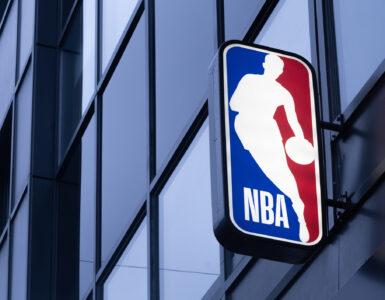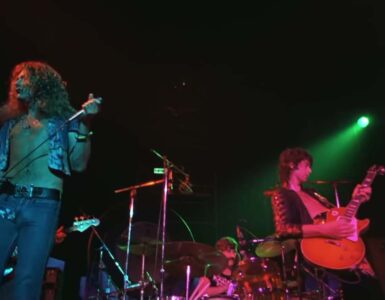While March Madness traditionally features the coronation of powerhouse programs, one can seldom recall a given champion during a specified year. Even champions descend into the fog of memory. Even the moniker March “Madness” signifies why the event has become so entrenched in the national conscience – It is not the expected cadence of a 1 seed steamrolling lesser competition that makes the event memorable; it is instead the possibility of the trickster indecorously uncrowning the king in a single contest. It is the chance for the viewing audience to witness a contemporary version of David versus Goliath, the hardwood serving as a substitute for Elah Valley, that so captures the imagination of fans across the country.
In this article, we’ll examine which Cinderella moments still resonate most clearly, which teams most thoroughly inspired fans to believe that sometimes, even the most daunting odds can be overcome.
1985 Villanova – March Madness

The 1985 Villanova Wildcats finished their regular season with an inauspicious 19-10 record, resulting in the awarding of an innocuous #8 from the NCAA committee. The Wildcats opened the tournament against the #9 seeded Dayton Flyers in Dayton. They marshaled a difficult 2-point win against the veritable home team. Several days later, the Wildcats managed an impressive victory over the region’s top seed, Michigan, by 4, to advance to the Sweet 16. During the second weekend, the Wildcats persisted further, defeating #5 seed Maryland and #2 seed North Carolina. Inexplicably, Villanova had advanced to the Final 4.
Here, the Wildcats first squared off against the #2 seeded Memphis Tigers. Astonishingly, again, they advanced, with their largest win of the tournament: A 7 point margin. In the National Championship game, Villanova faced Big East rival Georgetown, the reigning national champions; where they played what many pundits refer to as “The Perfect Game.” The Wildcats shot 78.6% from the field, which included 90% in the second half. It was a stunning upset.
The 1985 Wildcats, despite their quotidian regular season record, displayed remarkable cohesion during their NCAA tournament run. They faced a succession of high-quality opponents, most of which were regarded as superior, and displayed uncommon grit in grinding their way to victory after victory.
1983 NC State

The progenitor of the term “March Madness” is the 1983 NC State Wolfpack, led by the ebullient coach Jim Valvano. Known as the “Cardiac Pack,” the Wolfpack’s run from the end of the regular season of the ACC to sport’s pinnacle remains etched in lore.
Finishing the regular season at 17-10, NC State fans harbored little hope that their squad could navigate a daunting ACC tournament. The team promptly proceeded to erase those doubts, defeating both #5 North Carolina and #2 Virginia en route to an ACC tournament championship.
Largely on the credentials of their tournament run, NC State was awarded a 12 seed in the NCAA tournament. The Wolfpack proceeded through two narrow victories, against Pepperdine and UNLV, before again contesting a highly lauded Virginia squad. It made no difference, as NC State intrepidly advanced to the NCAA Championship against Houston, Phi Slamma Jama, itself. Incredibly, the Wolfpack prevailed against astounding odds, with Valvano engaging in buoyant histrionics as he celebrated NC State’s lone basketball championship.
2008 Davidson – March Madness

Led by future NBA superstar Steph Curry, the 2008 Davidson squad wasn’t expected to make any conspicuous advances come March. Davidson, a diminutive school located in North Carolina, had only a meager history of success as a basketball program.
That changed drastically with the emergency of Curry, who became a national sensation with his propensity for capitalizing on daring three pointers. One of his teammates, Jason Richards, reflected on Davidson’s position heading into the tournament in 2008: “That was Steph’s coming-out party. People around the baskebtball world knew how good Steph was, but that put him on the map, because everyone watches the NCAA Tournament. We became darlings of that year, with Steph being our guy, our leader. He took the nation by storm, and ran with it.”
In the first round, Davidson faced fellow upstart Gonzaga. Down by as much as 10 points in the second half, the Wildcats mounted a gallant comeback, guided by Curry’s 40 points, to win 82-76. A similar pattern emerged in the second round against Georgetown, as Davidson fell behind 46-29 with 17:52 left. Again, Curry spearheaded a swift comeback, engineering a 74-70 Davidson victory. In the Sweet 16, Davidson squared off against #3 seed Wisconsin. Shockingly, Davidson fashioned a dominant second half, easily dispatching the Badgers 73-56.
The fairy tale run finally concluded tragically against Kansas, 59-57. Ruminating on Davidson’s run 10 years later, coach Bob McKillop said: “It’s hard to believe it was 10 years ago, and maybe that speaks about what it has meant to Davidson. It still is a very vibrant, very vivid, exhilarating memory that touches everyone in the Davidson community. Not just the basketball players at that time, but basketball players from every generation, alums from every generation, community people from every generation.
2010 Butler

Most college basketball fans can recall the halcyon days of Butler, guided by the coaching acumen of Brad Stevens. From 2009-2011, the Bulldogs, a program without vast resources or a sterling legacy, made two consecutive national championship games. This tiny school in Indiana, through sheer discipline and execution, transcended the sport.
In 2010, Butler posted a commanding record of 33-5, winning the regular season championship of the Horizon conference. Based on their regular season dominance, Butler was awarded a 5 seed the NCAA committee. Without much opposition, the Bulldogs advanced to the Sweet 16, where #1 seed Syracuse, coached by the legendary Jim Boeheim, was waiting. With a rigid defensive effort, Butler pulled the upset, beating the Orangemen 63-59.
In the regional finals, Butler faced #2 seed Kansas State. In another challenging contest, with each team bludgeoning the other, the Bulldogs prevailed 63-56. Amazingly, Butler had punched their ticket to the Final 4 against perennial powerhouse Michigan State. Again, though regarded as the underdog, Butler continued their intrepid march against the Spartans, winning by the slight margin of 52-50.
In the national championship game, Butler faced Coack K and the Duke Blue Devils. Commenting on Butler, Coach Kyrzyzewski observed: “Every possession was going to be tough because they didn’t turn the ball over, and they really played together as one at the offensive end, so you weren’t going to score easy off your defense. They were going to you into the clock on the offensive end. Defensively they were very physical. You were going to have to play through contact. We felt it was going to be a low scoring game, which it was.”
In a back and forth game, one whose outcome could have been altered by a last-second shot, Butler tragically fell to Duke 61-59. Despite the loss, Butler preserved their resolve into the ensuing year, making an additional national championship. It was an incredible run, one that lifted Stevens to the NBA, where he was hired to coach the Celtics.
2018 Loyola Chicago – March Madness

In 2018, a small Catholic school made a stunning run to the Elite 8. Prior to 2018, the Ramblers hadn’t qualified for the NCAA tournament since 1985. After six years of relative mediocrity under head coach Porter Moser, the Loyola excelled in his seventh season, guided by several notable seniors, winning the Missouri Valley Conference. They consequently were awarded an 11 seed in the NCAA tournament.
In the first round of the tournament, after a pregame speech delivered by someone who would become a March Madness icon, Sister Jean, Loyola squared off against Miami. Trailing by two points with the clock waning, Marques Town hurled the ball to Donte Ingraham, who was positioned at the top of the key. Ingraham cast a desperation shoot which fortuitously fell through the hoop. In the next round, the Ramblers faced a pesky Tennesee Volunteers squad. For a second time, the Rambler’s won on a last-second shot, with Clayton Custer executing a quick mid-range jumper.
In the Sweet 16, Loyola Chicago faced fellow mid-major Nevada. As to be expected with this particular Cinderella squad, the outcome of the game was in doubt until the final seconds. With 9.4 seconds left, Custer dished the bowl out to a waiting Marques Townes. Townes pump-faked, scooted behind the three-point line, and sank the game winning 3. The Ramblers were heading to the Elite 8.
Waiting was Kansas State, who the Ramblers routed 78-62. Inexplicably, this tiny school from Chicago had advanced to the Final 4. Unfortunately, they fell there to the Michigan Wolverines, but the dramatics of their run left a lasting legacy for the school. As senior Marques Townes said, after falling to the Wolverines, “Anybody who hears the word Loyola, you’ll be respected for [the rest of your] lifetime. Anybody who hears Loyola can think about a high-character group who have great heart and grit. A group that never quits. I feel like we changed the direction of this program.”
For further basketball-related content, reference the following articles:
Top 10 Most Successful Programs in College Basketball History
16 of the Greatest College Basketball Players of All Time



